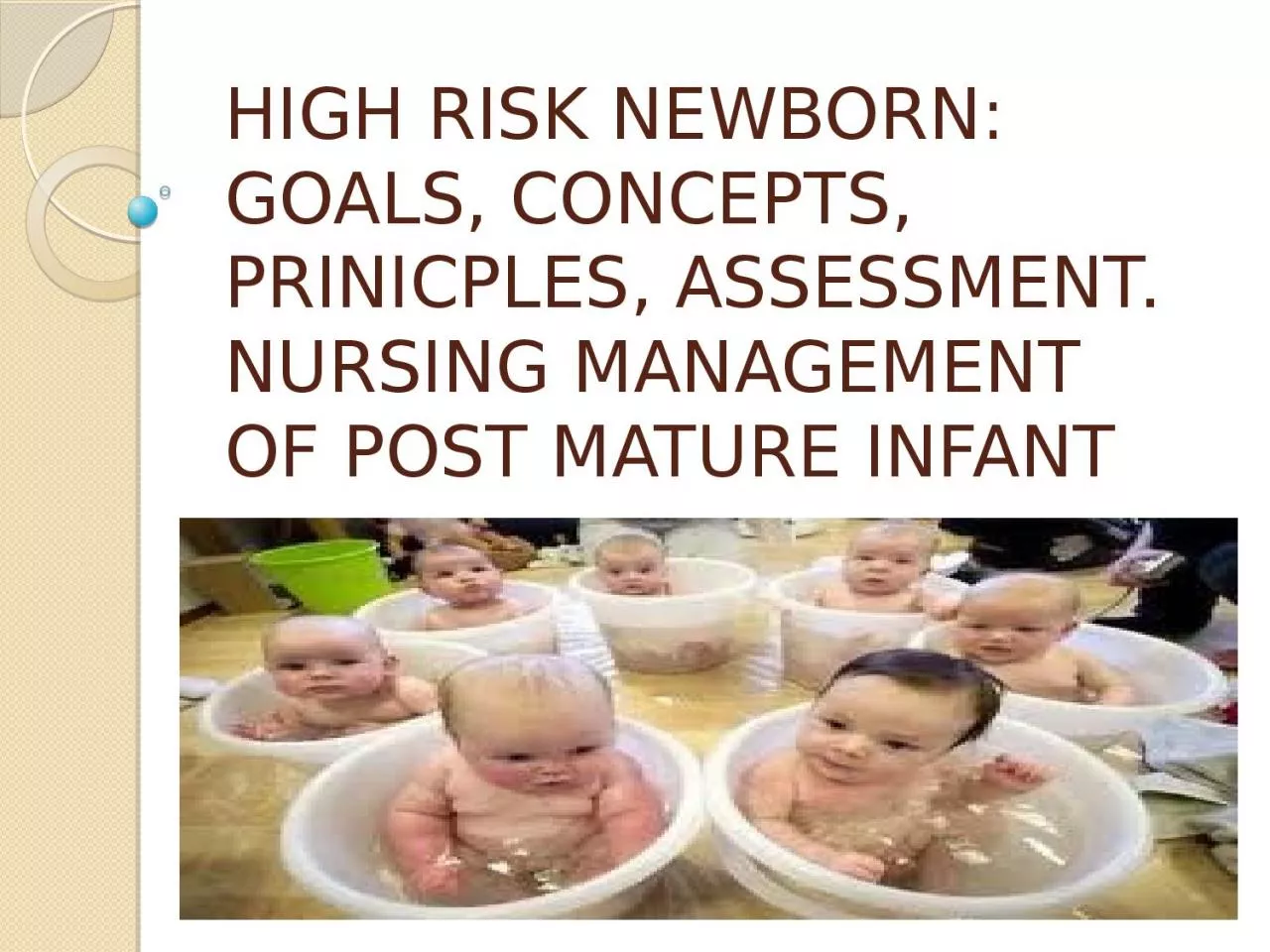

DEFINITION High risk newborn can be defined as a newborn regardless of birth weight size or gestational age who has a greater than average chance of morbidity especially within the first 28 days of life ID: 934584
Download Presentation The PPT/PDF document "HIGH RISK NEWBORN: GOALS, CONCEPTS, PRIN..." is the property of its rightful owner. Permission is granted to download and print the materials on this web site for personal, non-commercial use only, and to display it on your personal computer provided you do not modify the materials and that you retain all copyright notices contained in the materials. By downloading content from our website, you accept the terms of this agreement.
Slide1
HIGH RISK NEWBORN: GOALS, CONCEPTS, PRINICPLES, ASSESSMENT. NURSING MANAGEMENT OF POST MATURE INFANT
Slide2DEFINITION
High risk newborn can be defined as a newborn, regardless of birth weight, size or gestational age who has a greater than average chance of morbidity especially within the first 28 days of life.
Slide3IDENTIFICATION
Birth weight less than 2.5kg
Twins
Birth order 5 and more
Artificial feeding
Infection
Slide4GOALS
Perinatal
prevention
Resuscitation and stabilizationEvaluate and manageMonitoring and therapeutic modalitiesFamily centered care
Slide5ASSESSMENT
Initial assessment
apgar scoring
Slide6Clinical assessment
Slide7Transitional assessment
first period of reactivity
second period of reactivity
Behavioral assessment
Physical assessment
Reflexes
Slide8Post mature infant
Infants born of a gestation that extends beyond 42weeks as calculated from the mothers last menstrual period.
Slide9Predisposing factors
Pregnancy between the age of 15-19 yrs
Elderly women
Wrong dates
Multiple pregnancy
Fetal anomalies
Hereditary
Slide10Clinical manifestation
Absence of
vernix
caseosa
Loose skin and little subcutaneous fat
Absence of
lanugo
Abundent
hair on the head and long nails
Skin is wrinkles, cracked and peeling
Umbilical cord is thin
Slide11Diagnostic evaluation
History collection
Fetal movement recording
Electronic fetal monitoring
Ultrasonograpy
Biophysical profile
Doppler flow study
Slide12management
Immediate care clear the airway
Slide13Body temperature
Prevention of infection
Slide14Apgar score
Breast feeding
Slide15Umbilical cord care
Eye care
Slide16Diaper care
Hypoglycemic management
Slide17Vitamin k injection
Weight record